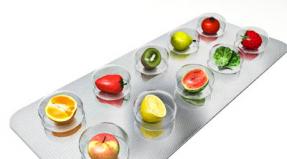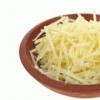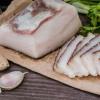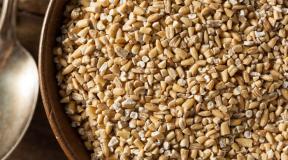Allowed fruits for stomach ulcers. What fruits can be eaten with a stomach ulcer and duodenal ulcer. What fruits can and cannot be
The disease in the form of an ulcer is a severe disease prone to recurrent course. To avoid repeated exacerbations, it is important to follow a strict diet aimed at protecting the mucosa and preventing relapse.
The correct selection of the diet will directly ensure the success of treatment in the acute period, provide for a further prognosis of the disease. In compiling a menu for a patient suffering from peptic ulcer, there are several important rules that must be strictly adhered to. In the article, we will consider in detail what is allowed for a stomach ulcer, and which foods are best avoided while maintaining health.
Basic nutrition rules
- The patient's food products should contain a sufficient amount of nutrients designed to cover the daily human need.
- Food products should not have an irritating effect on the mucous membrane of the digestive tract.
- The number of meals per day is repeated, portions are small.
- Do not eat food that is too hot or too cold. Room temperature is quite acceptable.
- The foods of an ulcer patient should not stimulate the production of hydrochloric acid in the stomach.
- You should not drink an excess amount of water at a time, you need to drink the liquid little by little and often.
- Preference should be given to food in a grated form - mashed potatoes, soufflé.
- Salt in products, ready meals - the minimum amount.
When prescribing a sparing diet, the intestines often suffer - constipation develops due to a lack of fiber in the diet. To avoid this, include more foods with pectin in your diet. Food will be better evacuated through the digestive tract.
A doctor - a gastroenterologist, a nutritionist - should prescribe a menu for a disease. The doctor will determine, based on the patient's condition, which food is allowed at the current moment of illness, which food will not harm the stomach.
List of allowed products
Based on the principles of proper nutrition described above, a list of products that are allowed for use in case of ulcerative lesions has been compiled. The list is extensive, any person will find a suitable set of foods, based on taste preferences, without harming health. Consider what is allowed with a stomach ulcer.
Milk and its derivatives
This product should be consumed regularly by patients suffering from ulcers. Many people are confused by this fact. In fact, a useful product neutralizes excess secreted gastric secretions, preventing an aggressive effect on the mucous membranes. In addition to the barrier function, milk is endowed with a lot of useful qualities, contains a full range of nutrients.
Dairy
The use of dairy products in the acute period of peptic ulcer should be treated carefully.
- For example, kefir is a product that has a laxative or strengthening effect. The impact of the dairy product depends on the method of storage at home.
- Patients who love sour cream have no cause for concern. The type of dairy product does not have to be excluded from the menu, but it can be eaten exclusively as a seasoning for a salad or a first course, not on its own.
- There is a common misconception that the use of cottage cheese is contraindicated for patients prone to ulcerative process. The composition of cottage cheese contains a considerable amount of useful components that bring the product to the forefront in a series of products that are allowed for use by patients with gastric or intestinal pathology. It is recommended to take cottage cheese low-fat, preferably five percent fat.
- A useful food product for stomach ulcers will be yogurt. You should choose low-fat varieties without dyes, additives from dried fruits. Serum in the acute period is not recommended for consumption.
Cheese
Mild and unsalted varieties of cheese are useful for peptic ulcer disease. Cheese is rich in a variety of proteins necessary for building body tissues, indispensable for regenerative processes. In addition to proteins, cheese is rich in amino acids. The advantage of cheese is that the protein components of the product are already partially broken down during the enzymatic treatment that accompanies cooking, and the cheese is easily absorbed in the patient's body.
Dairy products for ulcers are useful, filled with minerals, vitamins and organic compounds that are beneficial to health.

Vegetables
Vegetables and fruits are shown in the diet, full of biologically active valuable substances. An important component of plant foods is pectin. The main value is in the high ability of the substance to envelop the walls of the stomach and intestines, preventing irritation of the epithelium and protecting it from aggressive effects. Pectin promotes good evacuation of dietary fiber through the intestinal lumen, serves to prevent the patient's constipation.
A valuable component is fiber, which ensures the excretion of food, promotion through the intestines.
Cabbage
Vegetable juice has a beneficial effect on regeneration processes in the intestines and stomach. Thanks to the contained vitamins, the healing of the ulcer occurs instantly. It is undesirable to use cabbage in raw and even boiled form during exacerbation of peptic ulcer. Boiled cauliflower is allowed to feed ulcers.
Potato
Boiled vegetable culture does not irritate the mucous membrane. Potatoes are part of the diet of any kind with peptic ulcer. Raw potato juice deserves close attention: it reduces the increased acidity of gastric juice, eliminates vomiting, nausea, pain, heartburn in patients, and promotes the healing of an ulcer.
Carrot
Orange root is useful to use in any form, the composition includes a number of useful substances. Carrots are allowed with an ulcer in boiled or stewed form. It is permissible to squeeze the juice, mixing with other juices, and drink it to heal the ulcer. You can add carrots to mashed potatoes in a small amount.

Celery
Permitted product, used in any form with an exacerbation of an ulcer. Squeezed healing juice is supposed to be drunk to speed up reparation, you can cook soup or another dish. Celery juice has a pronounced anti-inflammatory and analgesic effect on the mucous membranes.
Pumpkin
The mentioned vegetable is distinguished by a minimum amount of coarse fiber in the composition, ensuring suitability for nutrition even in the stage of exacerbations. Mashed potatoes, cereals with cereals and milk, soups and vegetable side dishes for meat are prepared from pumpkin. Shows wound healing, analgesic effect. In the remission stage, it is not forbidden to eat pumpkin seeds.
Greenery
Dill, parsley can be added in small quantities to the first or second courses, without abuse, so as not to provoke deterioration.
Vegetable oils are useful for restoring the normal functioning of the digestive system. Olive oil with a stomach ulcer has an enveloping, anti-inflammatory effect, contains a lot of vitamins and fatty acids, and promotes regeneration processes. Salads are seasoned with olive oil.
Fruits
Fruits in the course of treatment of peptic ulcer are discussed separately. In the diet, preference is given to varieties of fruits and berries without hard skins, which have a sweet taste. The harsh peel of the fruit is poorly digested, irritating the mucous membrane. Fruits and berries can be consumed in pureed, boiled, stewed or baked form. It will be correct to cook compote or jelly from them.

Fruits included in the list of suitable for use:
- bananas;
- strawberry;
- viburnum;
- currant;
- sea buckthorn;
- apples;
- pears.
Meat and fish products
These components of dietary nutrition can be consumed cooked in steam form. Meat is a valuable source of protein and fat. For a speedy recovery and dietary nutrition, beef or veal is most acceptable. These varieties are low in fat. Many patients prefer chicken meat because of its palatability and low cost.
The degree of assimilation of chicken meat is higher compared to beef. Nutria, rabbit meat, turkey meat will become useful for the body. Similar types of meat products can be safely used for peptic ulcer disease.
When it comes to fish, the qualities of a river or sea product are very valuable. The biological substances that make up the composition take part in the processes of regeneration. Fish and fish dishes are easily digested, lighter than meat. An abundance of dishes are prepared from fish.
Buckwheat soup with chicken broth can be eaten for lunch without risk to health.

Eggs
The most valuable part of the product is the yolk. It contains most of the components necessary for metabolism. For duodenal ulcers, eggs are soft-boiled and eaten, the easiest form to digest. Eating raw eggs is fraught with infection, dangerous infectious diseases. Quail eggs have useful dietary properties.
Benefits bring cereals - buckwheat, rice, semolina, sago. They are boiled with milk, served as garnishes for vegetable or meat dishes. Groats need to be well boiled, grind. Cereals are prepared from cereals, soups on low-fat meat or vegetable broth.
Beverages
Patients are interested in what kind of tea can be drunk with an ulcer.
Green tea is good for ulcers. The drink is rich in antioxidants, helps to heal ulcers and relieve inflammation. Do not drink it too strong and hot.
Often patients ask the question which juices will not hurt with a stomach ulcer. Vegetable juices - cabbage, potato, carrot juice, from beets or celery - are classified as allowed for the disease. To improve the taste, dilute with an apple drink. Fruit juices with an ulcer are allowed to drink only from ripe and sweet fruits. Too sweet juices are diluted with boiled water.
Chicory has a positive therapeutic effect in duodenal ulcers. A drink from the root of the plant replaces coffee in taste without any side effects. The healing drink is kombucha.

Forbidden dishes
It is worth considering in detail what you can not eat with a stomach ulcer. Below is a list of prohibited foods.
Vegetables
- Raw vegetables with coarse fiber, which irritates the mucous membrane mechanically and chemically, should not appear in the diet of the ulcer. In the acute period do not eat tomatoes, garlic, turnips, onions, raw cabbage, vinaigrette.
- Contraindicated in duodenal ulcer grapes, has a high content of sugar and active acids. It is not recommended to drink grape juice during an exacerbation of an ulcer. In the acute period, pomegranate is excluded, the fruit is sour, which will negatively affect the condition of the mucosa. In the remission stage, it is permissible to drink diluted pomegranate juice to restore hemoglobin. Cranberries with a stomach ulcer are harmful, like lemon.
- Fatty heavy dishes - dumplings, barbecue, fried pork cutlets, lamb are strictly contraindicated for stomach ulcers, liver and lard are prohibited.
- Nuts and seeds have an irritating mechanical effect on the stomach wall, and are categorically contraindicated in case of intestinal and stomach ulcers. Walnuts are not recommended to be consumed categorically.
- Mushrooms are extremely difficult for the stomach, and are not recommended for use even in remission.
- Spicy seasonings - garlic, ginger, pepper are categorically contraindicated. Herbs are full of irritating properties, stimulate gastric juice. Tomato and nut sauce are contraindicated.
- In the acute period of the ulcer, you can not try dried fruits. Dried apricots or prunes are harmful, injure the weakened mucous membrane. But during the period of remission, prunes with honey prevent constipation, restore the tone of the body.
- With a stomach disease, fatty foods, sausages, liver, caviar, lard are excluded. Butter can be used in small doses for seasoning soups or porridge.
As the patient restores health, the diet gradually expands, but it is permissible to return to good nutrition after a year from the start of recovery.
For the speedy healing of the ulcer, in addition to regular medication, you need to follow a certain diet. It is supposed to exclude food that irritates the mucous membrane, which increases the formation of hydrochloric acid. Often, nutritionists recommend taking dairy products, cereals, lean meats, fish, and bread. However, when using only these products, there is a shift in the acid-base balance. In the patient's menu, it is better to include vegetables that will contribute to the alkalization of the environment.
Vegetables are a necessary source of vitamins and microelements, nutrients that a person needs, which are not found in other products. A large amount of pectin found in vegetables has enveloping properties. Pectins protect the mucous membrane from the action of harmful substances that enter the stomach with food or are synthesized during digestion. They bind harmful substances, remove them from the body through the intestines, normalize the microflora, and prevent the processes of fermentation and decay. The composition of vegetables includes fiber, which takes part in the evacuation of food from the intestines, stimulating the motility of the organ. The mentioned properties of plants are used in the treatment of peptic ulcer. For vegetables, however, there are restrictions.
Vegetables with a stomach ulcer should not adversely affect the mucous membrane and increase the production of gastric juice. Most foods eaten raw are harmful during an exacerbation of the disease. Of course, you need to eat boiled fruits during an exacerbation. Steamed foods are especially useful - such dishes retain a maximum of useful vitamins and minerals, have a positive effect on reparative processes, and accelerate healing.

healthy vegetables
In the dietary menu, gastroenterologists include products that do not irritate the intestines and do not increase the production of hydrochloric acid. Selected species have an independent wound-healing effect. With vegetables, the body receives the necessary vitamins and minerals that increase immunity, helping to speed up recovery.
List of vegetables acceptable for stomach ulcers:
- Potato.
- Zucchini.
- Carrot.
- Pumpkin.
- Separate types of cabbage.
- Greenery.
Potato
Potato tubers contain vitamins of groups B, C, D, PP, E, K, a lot of microelements. In addition to fiber and pectins, potatoes are rich in organic acids and carotene.
Fried potatoes are not recommended during the acute period of peptic ulcer. Boiled potatoes are not contraindicated; heat-treated tubers are included in dietary dishes. Mashed potatoes and boiled potatoes do not increase acidity, they show many useful properties. Potato starch has an enveloping effect, relieves inflammation and spasm. The fiber contained in the potato does not stimulate peristalsis, does not irritate the intestines.
In folk medicine, potato juice is widely used to treat the disease. It is taken orally 30 minutes before meals three times a day for three weeks. For treatment, only freshly squeezed juice is allowed. Remember, potatoes are recommended to be stored for no more than six months, after the expiration of the period, harmful substances accumulate in the tubers that cause poisoning of the body, for example, solanine. Potato juice is harmful to tooth enamel, drink the liquid through a straw.
Cabbage
Cabbage contains an abundance of vitamins - C, P, groups B, K, U, folic acid, salts of useful trace elements. Vitamin U, found in cabbage, has an anti-ulcer effect. Cabbage contains substances that have a detrimental effect on the causative agent of peptic ulcer - Helicobacter pylori.
Not all types of cabbage are allowed for stomach ulcers. White cabbage contributes to an increase in acidity, its use is contraindicated. And gastroenterologists do not prohibit cauliflower for cooking diet soups and mashed potatoes. It is better to use inflorescences, dishes from the leaves damage the mucous membrane. Stewed and salted cabbage are contraindicated in case of illness. Possible harm is sauerkraut and seaweed, but the opinion of doctors about the use of these plants during an exacerbation of the disease is contradictory.
Carrot
Carrots are rich in vitamins A, C, K, E and group B. Raw carrots increase the production of gastric juice, it is contraindicated to eat root crops in case of illness. Carrots for stomach ulcers are recommended as part of vegetable diets only boiled and grated in moderation. During the period of remission, it is allowed to take carrot juice to prevent exacerbation.

Pumpkin
Pumpkin contains a large amount of vitamins A, C, E and group B, many trace elements, sulfur and copper are present, which are difficult to find in other products. With a stomach ulcer, pumpkin is consumed in any form. The vegetable contains a small amount of fiber, does not affect peristalsis.
The plant is rich in potassium and carotene. A raw vegetable mashed with honey stimulates the healing process of an ulcer. Pumpkin juice reduces the production of gastric juice. Stewed or boiled pumpkin normalizes digestion and relieves inflammation on the mucous membrane of the organ. Pumpkin juice is taken during the period of exacerbation and remission 30 minutes before meals.
Zucchini
A white vegetable is an indispensable component of the dietary menu during a peptic ulcer. Zucchini is saturated with potassium and iron, vitamins C, E and group B. Zucchini contains substances that have antitumor properties, reduce inflammation, and normalize the motility of the digestive tract. Zucchini in the diet is allowed only in boiled form, raw vegetables increase the formation of hydrochloric acid.
Salad
The composition of lettuce leaves, in addition to carbohydrates and fats, includes vitamins A and C, trace elements - potassium, iron, calcium, phosphorus. Lettuce is not contraindicated in peptic ulcer disease, lettuce leaf juice is used as an additional phytotherapeutic treatment.
Celery
The vegetable is rich in vitamins C, A and B, trace elements, contains oxalic acid, purines and essential oils. Substances found in celery accelerate the healing of ulcers and have a protective effect.
Dill
In moderation, fresh herbs are allowed to be consumed even during an exacerbation. The plant contains an excess of vitamin C, phosphorus, magnesium, calcium and potassium salts.

Parsley
Like dill, parsley is allowed to be added to food for stomach ulcers. In addition to vitamins B and C, the leaves are full of trace elements and carotene.
Vegetables taken only during remission
Vegetables are eaten exclusively outside the exacerbation of the disease due to irritating properties and stimulation of the acid activity of the stomach. The list includes tomatoes, beets, peppers, turnips, cucumbers, onions, garlic. Despite the abundance of useful substances contained in plants, the use of fruits and root crops can slow down the recovery of the stomach, serve as an additional cause of ulcer formation.
With an ulcer, stool disorders are not uncommon, the use of a large amount of fiber is not recommended, consistent with dietary recommendations.
Beet
Beets with stomach ulcers are contraindicated in the acute phase, due to the content of natural acids. For the prevention of peptic ulcer, doctors often recommend drinking beetroot juice mixed with honey. This mixture is taken before meals for five days.
cucumbers
Fresh and pickled cucumbers are not allowed to be consumed during an exacerbation. When healing an ulcer, it is permissible to add modest doses of fresh, peeled cucumbers in crushed form to food as part of other dishes.
Tomatoes
Ulcer does not like tomatoes. Tomatoes increase acidity, irritate the intestines and stimulate the work of the organ, slow down healing, increase inflammation, and negatively affect the pancreas. Outside of exacerbation, the fruits are allowed to be consumed in a small amount in a purified form.

Onion
Onions contain many flavonoids that have an antimicrobial effect, but the use of a vegetable during an exacerbation is undesirable due to its irritating effect. During the period of remission, it is possible to use a boiled product in a small amount as part of dishes.
Garlic
The vegetable has a negative effect on the gastric mucosa and pancreas, in its raw form during exacerbation it is categorically contraindicated. When healing an ulcer, a small amount of garlic can be added to dishes when stewing to add flavor.
bell pepper
When consumed raw, pepper increases the secretion of gastric juice, and is prohibited during an exacerbation of an ulcer. In the remission phase, it is used as a good antioxidant and antitumor drug with antibacterial activity against Helicobacter pylori.
Sorrel and legumes are contraindicated during the period of exacerbation. Sorrel contains oxalic acid, which increases stomach acidity. Peas and beans consist of indigestible fiber, which is best limited in pathology.
If you follow the advice of nutritionists and adhere to the right diet, it will be possible to achieve healing of the ulcer faster. Products used wisely in case of an illness will help a speedy recovery and prevent an exacerbation of the disease in the future. With the right diet, peptic ulcer can be eradicated.
A stomach ulcer is an unpleasant and dangerous diagnosis. If a person suffers from this disease, the fact of the disease is strongly reflected in nutrition. Directly in the treatment of the stomach, it is often necessary to take many medications, which, while having a beneficial effect on the organs of the digestive system, show side effects. Among others, weakened immunity, changes in microflora and other negative symptoms stand out.
Doctors unanimously argue that adherence to the diet and diet of the patient is important for maintaining health. In the diet of the ulcer, it is recommended to include fruits that contain beneficial trace elements and amino acids that are important for the body. Vitamin fruits are able to weaken the negative effects of medicines on internal organs.
Fruits that are allowed to eat with a stomach ulcer


Berries
- Ripe berries, for example, strawberries or strawberries (in summer), show a high percentage of enzymes that have a beneficial effect on digestion.
- Sea buckthorn berries will be a useful component of the diet of a patient with a stomach ulcer. Sea buckthorn contains organic acids, vitamins B and C, carotene and other essential elements for humans. An important distinguishing property is the ability to quickly eliminate inflammation in the gastrointestinal tract, assist in the healing of epithelial tissue. Compote or jam is made from berries.
- Blackcurrant strengthens the body, helps digestion, contains minerals, vitamins, pectin.
- Kalina includes many vitamins that are important for the body, you should not use the berry in its pure form because of the strong bitterness. It is better to make tea from viburnum berries, a medicinal infusion.
- In season, more blueberries are recommended, which naturally cleanse the intestines, include pectin and iron. With the use of blueberry berries in food, the processes of inflammation of the digestive organs are eliminated, ulcers on the epithelial membrane of the stomach are healed.
- During the treatment of peptic ulcer, rose hips are useful, it is easy to cook compote from the fruits of the bush, it is permissible to add fruits to tea. The drink helps to replenish the body's vitamin reserve, has a positive effect on the digestive organs.
We must not forget that fruits and berries are eaten in moderation, limiting oneself in use. It is important for the patient to maintain a balanced diet, preventing harm to the organs of the gastrointestinal tract, trying not to aggravate the situation with the disease.
Consider which fruits to eat with peptic ulcer can not be in order to prevent undesirable consequences.
- Citrus fruits (lemon, orange, tangerine, grapefruit, lime);
- Peaches;
- Melon;
- Pomegranate.
The listed fruits with a stomach ulcer promote fermentation processes, are strictly prohibited for the patient's diet. They negatively affect intestinal motility, increase acidity in the digestive organ. These fruits contain an abundance of sugar, fruit and organic acids in excess. Citrus fruits often become allergy provocateurs.
Dried fruits
Dried fruits are allowed for patients with ulcers, saturated with trace elements and vitamins. Nutritionists recommend including dried fruits in the menu of patients; dried fruits normalize the work of the gastrointestinal tract against the background of an ulcer. In the remission stage, dried fruits will be useful, in the acute period it is better to stop using the product.


Conditions for the use of raisins by patients:
- eat little by little, in small quantities;
- add raisins to dishes, try not to use them on their own;
- the most favorable time to eat some raisins is in the morning or afternoon;
- berries prepared from varieties of sweet and ripe grapes are allowed;
- with an ulcer of the duodenum and stomach, raisins are allowed to the patient's table only after thorough washing and soaking in cold water;
- dried fruit is allowed when the disease recedes.
An important point when considering the characteristics of the diet of people with peptic ulcer will be the observance of a balanced diet, which guarantees positive results of drug treatment. The task of a dietitian is to develop an individual diet for the patient, taking into account the distinctive qualities of the body and the characteristics of the course of the disease.
With a duodenal ulcer, one should not overeat, allowed fruits are best consumed in the morning, individual fruits - preferably in a baked form.
What fruits can be eaten with a stomach ulcer? Peptic ulcer of the stomach is a severe chronic disease in which the mucous layer of the organ wall is affected with the formation of ulcerative defects. One of the most common diseases of the gastrointestinal tract, which occurs in people over 20 years old. Exacerbation most often occurs in spring and autumn, has a relapsing course with periods of remission.
Causes of stomach ulcers
The bacterium Helicobacter pylori causes this disease (its activity increases the level of acidity in the stomach), but there are several more theories of the occurrence of this disease:
- Certain medications have a negative effect.
- Stress, leading to a violation of the nervous system.
- Eating unhealthy food.
- Bad habits (smoking, alcohol).
- Heredity.
Erosion of the mucous layer of the stomach disrupts its normal functioning, which is why the patient has complaints about:
- Feeling of pain in the stomach, aggravated by physical exertion or after eating spicy foods or carbonated drinks.
- Heartburn is a burning sensation behind the sternum, spreading upward from the epigastric region along the esophagus.
- Belching sour.
- Nausea, sometimes leading to vomiting.
- Problems with stool (constipation).
When contacting a medical institution, it is necessary to take tests and undergo additional research methods (ultrasound of the digestive tract, FEGSD, radiography) to make an accurate diagnosis. The doctor prescribes antibiotic therapy, antisecretory drugs and agents that enhance the protective function of the gastric mucosa. Be sure to follow a special diet.
The main aspects of nutrition: the diet is compiled for effective treatment and proper recovery of the body. If you stick to this diet, the risk of recurrence of the disease is reduced. Here are some guidelines for eating:
- You need to eat food in small portions, chewing thoroughly, and increase the number of meals up to 6 times a day, the last one - 2 hours before bedtime.
- The drinking regimen should be about 2 liters, drink only in small sips, but often.
- Products must be selected with a certain amount of fats, proteins and carbohydrates necessary for the normal development of the body.
- Dishes are served cooked in gentle mechanical and thermal conditions.
Do not forget about vegetables and fruits, which contain many useful substances. Namely, they produce products that contain non-digestible carbohydrates - pectin and fiber. Their main function is to envelop the action, which protects the walls of the stomach from irritants. Cellulose contributes to the normal functioning of the digestive tract and prevents constipation.
What fruits can be with a disease?
Nutritionists have compiled a special list of what fruits are eaten with a stomach ulcer:
- Apple. Does not cause allergic reactions and contains a complete complex of vitamins and minerals, is a source of pectin. If the patient has a remission of the disease, then before eating the apple, you can simply cut off the peel and eat it raw or grated. In the acute period of the disease, it is necessary to bake the fruits in the oven.
- Pears. It is worth choosing ripe, sweet varieties. The peculiarity is low calorie content and high level of nutrients. Even with heat treatment, they retain a sufficient amount. Be sure to clean the top skin. No more than 2 pieces per day are allowed.
- Banana - the most valuable fruit, which is advised to include in the daily diet of the patient. The benefits are moderate calories and high levels of potassium, which is very important for overall health. It is due to its concentrated composition that bananas inhibit pathological microorganisms. It is recommended to eat the fruit on an empty stomach, as the walls of the stomach are enveloped and the acid-base balance is restored. And if you mix it with milk, then antacids will enhance their effect. During an exacerbation, you need to beat one banana with a blender with the addition of 15 ml of olive oil and take 30 g every 2 hours.
- Pomegranate. It is called the king of fruits because of the large amount of nutrients. Contains a lot of iron. The product is prescribed to increase hemoglobin levels and strengthen immunity. But patients with stomach ulcers are not recommended to use pomegranate, as it has an increased acidity of the juice. But a decoction of fruit peels is an excellent folk remedy. It is necessary to take 10 g of dry peel, pour 200 ml of boiled water over them and leave to infuse for half an hour. Take 25 ml daily 1 time every 6 hours.
Prohibited Products
Forbidden fruits for stomach ulcers:
- Persimmon is a fruit, the beneficial characteristics of which are the presence of pectin and tannin, sucrose, fructose and many other vitamins. With a stomach ulcer, you can’t eat raw, as the product consists of fiber and coarse connective tissue. It can cause constipation, mechanically irritates the mucous membrane and inhibits the recovery process.
- Lemon and other citrus fruits. You can not use, they increase the level of acidity of the stomach, which is categorically contraindicated.
- Grape. You should refrain, it causes an increase in acidity and the process of fermentation in the stomach. Subsequently, it will lead to gastric disorders, bloating and flatulence.
- Melon. A very valuable fruit, it cleanses the body well, but you can’t use it with an ulcer. It is a heavy food, negatively affects the gastric mucosa, burns it and causes irritation. The patient may feel the onset of pain in the abdomen and the appearance of heartburn.
- Kiwi. It is unacceptable for patients with such a diagnosis to eat, because the product can provoke a jump in the level of acidity and is the cause of fermentation.
Fruits with stomach ulcers are recommended to be consumed in a baked form. Can be cooked in the oven and microwave, served as a side dish or dessert. It all depends on individual taste preferences, but do not neglect a specially formulated diet.
In case of disorders of the gastrointestinal tract, proper nutrition is always of great importance, usually doctors advise patients to follow a special diet, the features of which depend on the type of disease. People suffering from stomach ulcers have to temporarily limit the use of certain foods, which include certain fruits.
Despite the fact that they contain a huge amount of useful substances, sometimes they can provoke an exacerbation of peptic ulcer and the appearance of unpleasant symptoms. It is worth knowing in advance about the types of fruits that can be eaten with this disease, as well as which fruits it is better to completely eliminate from the diet.
Prohibited Fruits

With an ulcer, you should sharply limit the use of all fruits that adversely affect the mucous membrane of the digestive system. Many of them cause increased acidity, increasing excess acid production, worsen intestinal patency, and also disrupt the normal functioning of the digestive tract. Due to the increased level of acidity in the intestine, a pathogenic environment is formed, this negatively affects the entire process of therapy and can even provoke a sharp deterioration in the general condition of the body.
The list of prohibited fruits includes:
- any citrus fruits, since they contain a large amount of acids;
- grapes, causing fermentation in the stomach and stimulating intestinal motility;
- melons, kiwis and peaches containing an excess of acids and sugars.
Permitted fruits

Peptic ulcer disease is not at all a reason for completely refusing to eat all types of fruits, in fact, some of them are quite capable of having a good effect on the digestive tract, but they still should not be abused. Doctors recommend including fully ripened sweet fruits in the diet, which significantly help improve the functioning of the intestines, especially during the period of taking medications, and neutralize their negative effects. You can eat such fruits with a stomach ulcer in fresh grated or baked form, add them to other dishes or eat them separately.
The list of permitted types of fruit includes:
- pears and apples;
- bananas;
- quince;
- persimmon;
- avocado.
Benefits of bananas, apples and pears

Since all fruits have a different effect on the body as a whole and in particular on the functioning of the gastrointestinal tract with a stomach ulcer, it is worth learning separately about the features of each of them. Favorite by many, bananas are the most popular fruit for peptic ulcers. They are not only quite sweet and satisfying, but at the same time they do not contain acids dangerous for the stomach, providing a soft enveloping effect on it. Bananas can be eaten fresh, added to lean cereals, and you can also make simple cocktails based on milk and cottage cheese from them.
Pears should be eaten in the daytime, peeled off and not exceed the allowed number of fruits per day, usually doctors do not advise eating more than one or two pears per day. On their basis, compotes are boiled, eaten baked or added to various dishes. Apples for ulcers can be consumed in moderation, since they also contain acids, these fruits must be baked or added to pastries, cereals, mashed or compotes.

The benefits of persimmons and avocados for ulcers

Experts recommend including persimmons in the diet, since this fruit has proven itself in the treatment of peptic ulcer, despite the high content of sugars. The thing is that persimmon has a pronounced astringent property and promotes active healing of scars. On the day, you can eat one or two small persimmons fresh, or mix this fruit in combination with cottage cheese and other products that are useful for ulcers.
Avocado is also very useful for all patients suffering from gastrointestinal diseases due to the complete absence of dangerous acids and a high content of oils that activate the processes of scarring of erosions and ulcers.
It contains polyunsaturated fatty acids, as well as a large amount of vitamins. Of the additional advantages of avocados, it is worth noting its ability to be combined with almost any product, including vegetables, meat, fish, cottage cheese, yogurts and much more.
Fruit juice consumption

Admirers of freshly squeezed juices sometimes find it hard to give them up after they have been diagnosed with gastric ulcer, but, unfortunately, juices are really harmful and dangerous in such a pathology. This category includes both concentrated purchased products and juices prepared at home using juicers. When the juice enters the stomach, it provokes the rapid production of the maximum amount of gastric juice, as well as certain digestive enzymes.
Such a process negatively affects the healing of ulcers and erosions on the walls of the stomach, therefore, during treatment and during periods of exacerbations, it is best to completely exclude juices from the diet and replace them with whole fruits. Bananas, pears, apples and other permitted fruits can be digested gradually, releasing particles of fruit acids and juices over a period of time. These reactions do not affect the work of the gastrointestinal tract in a negative way, especially in cases where the fruits have been heat-treated.
Diet food based on fruits

Despite all the restrictions, the diet can be varied, including during the treatment of stomach ulcers. The diet can include a variety of dishes with the addition of fruits, such as puddings, curd masses and creams, bake whole apples and pears with or without filling, prepare jelly, jelly, compotes and cocktails. All this will help not only diversify the diet, but also significantly improve the functioning of the gastrointestinal tract, since all fruits allowed for consumption have a positive effect on the stomach with an ulcer. Doctors do not recommend overeating, it is best to just adhere to acceptable norms and follow the rules of a healthy diet.
What fruits can be eaten with a stomach ulcer? Which are completely contraindicated? Everything that we consume internally saturates us with energy. This is especially true for vegetables, fruits and berries in the summer season. In summer and autumn, we must be nourished with vitamins for the whole winter. But what about someone who has ulcers, and some foods, such as grapes, cause acute pain?
So, let's figure out which fruits and berries are useful for the mucosa at a certain level of acidity, and which ones will bring a new aggravation closer?
Causes of gastric and duodenal ulcers
Inattention to your diet, frequent smoking, the habit of eating too hot and fried at night and cold hot dogs with mustard during the day are all unfavorable factors that lead to stomach problems. In particular, to gastritis, and then to an ulcer. Helicobacter bacteria aggravate inflammation of the mucous membrane. But most often they are not the root cause of the disease, because in the stomach of completely healthy people who never complain of pain, the bacterium is also found. But she doesn't harm them.
The ulcer is being treated in the hospital. The pains of ulceration of the protective mucosa are very stylish. The patient is practically unable to work. After a course of treatment in the hospital, the person is sent home. But first, they are informed about the need to follow special dietary rules.
A diet called "Table No. 1" is prescribed - sparing nutrition for stomach and duodenal ulcers. Particular attention in this diet is given to fresh fruits and vegetables. However, they also need to be used wisely.
Low and high stomach acid
Fruits and vegetables with a stomach ulcer should be eaten chopped. Each fruit has its own set of useful components. For some patients they are useful, for others - not so much. Those who have atrophic gastritis with low acidity - their own diet, for patients with frequent diarrhea - a different diet. And for those who have increased acidity - the third.
What fruits can be eaten with a stomach ulcer, given the acidity? That is what we will discuss.
Table number 1 for ulcers. Nutrition rules
Nutritional rules should be followed strictly. You can not treat the ulcer inattentively. There is a high risk that the sores will develop into stomach cancer. The gastric mucosa is completely renewed in a few days. Therefore, if you take the treatment well, then the stomach can be cured.
But the daily menu has a huge impact. Many fruits with stomach and duodenal ulcers are not recommended to eat. Others, on the contrary, due to their composition, are a remedy for the inflamed mucosa.

How to eat? First, it is important not to drink after eating for at least half an hour. It is better to eat 5-6 times a day, in small portions, so as not to overload your stomach. The diet should be selected nutritious, so that it contains a lot of micronutrients, but less fat. All food should be properly processed, and moderately heated. It is better to reduce the amount of salt in the diet. The best diet for an ulcer patient is diet food No. 1, where there is a place for healthy cereals, soups, vegetables and fruits, but there is no place for fried and fatty foods.
In our article, we will discuss the benefits and harms for the gastric mucosa and duodenum of the most popular and most beloved fruits.
Is it possible to fruit with a stomach ulcer
Nutrition is selected individually for each patient complaining of stomach pain. If, after analysis, it is clearly established that the patient has not just inflammation, but already has ulcers, then many fruits will be contraindicated until the wounds heal.
If there is a stomach ulcer, fruits can be eaten only those that do not contain irritating mucous acid. Some fruits are considered relatively safe for the mucosa. Others are highly undesirable, while still others - oranges, for example - are completely prohibited.

The patient will need to study his illness in detail: what is the acidity, where is the ulcer located, is it one, or there are several of them; and then you need to study the composition of the products. It is important to constantly evaluate your condition after eating - is what is eaten suitable for the stomach, or does it cause excruciating conditions - belching, pain, fermentation, bursting, etc.?
Now it’s clear - fruits need to be selected individually.
Useful fruits and berries for mucous
We will discuss all the nuances of the correct use of fruits. Fruit with a stomach ulcer is at least some needed. Why does the body get vitamins? After all, the main diet in a period of acute pain is grated soups and cereals. What fruits can be eaten with a stomach ulcer? What is the real benefit for the stomach of some fruits? Will be useful:
- quince;
- plums;
- bananas;
- apples;
- avocado;
- pears;
- persimmon.
Persimmon, like a banana, is a very positive fruit in terms of the almost complete absence of acids. But it contains iron, carotene, and other elements that improve the general condition.
These fruits do not injure the stomach, as they do not contain acid. Sweet fruits saturate the body with useful substances, but do not destroy the mucous membrane with their acids.
Fruits and vegetables. How to cook
All vegetables and fruits with a disease such as an ulcer are important to process. A large amount of fiber is problematic for the stomach to process.
Fruits and vegetables need to be handled in a special way when consumed. Apples, for example, should be grated, pumpkin baked in the oven, avocado and quince should be cut into small pieces. If there is a period of exacerbation, the more you need to be careful. Then the peel of the fruit is peeled and mashed, as for a one-year-old child. You can cook smoothies, juices, fruit compotes to make the diet more varied.
It is better to make kissels from quince, as the product is too tart when raw. Any jelly, from various fruits, will be excellent food for a sick, inflamed gastric mucosa. They perfectly saturate and at the same time envelop the walls of the stomach, you feel much better after such a meal. But in this case, all vitamins and microelements are lost.
Still, raw fruits should also be consumed little by little. Each person needs 30-50 g of fiber per day. You can get it from black bread, but bread will not provide many micronutrients.
What fruits should not be eaten
It is absolutely known that fruits containing acid only harm with erosive damage to the mucous membrane. Only sweet fruits are recommended.
The list of prohibited sweets is as follows:
- pomegranate;
- orange;
- grapefruit;
- peach;
- kiwi;
- pineapples;
- melons;
- figs.
These products are best left on the store shelf. Citrus fruits are contraindicated for any acidity: both high and low. It is also forbidden to eat melon, even when the patient feels well. This fruit is not as easy to digest as it seems.
Useful berries for ulcers
What else can you eat during remission? You can expand your diet at this time. Fruits and berries with stomach and duodenal ulcers can be eaten raw, but chopped in a blender are much better.
What berries are useful? In the summer, berries such as raspberries, strawberries, blackcurrants are very useful. But red currants and gooseberries are too sour. They should not be eaten raw. It is better to be careful with cherries and cherries. Watermelons can only be in a period of stable remission - no more than 2 slices per day.
The benefits of bananas for those suffering from gastritis and ulcers
Still, what fruits can you eat with a stomach ulcer? Ripe sweet bananas are most useful for ulcers. Doctors recommend them for both chronic gastritis and ulcers. They have the ability to heal the mucous membrane. Therefore, one banana should be eaten 30 minutes before lunch (but not in the morning on an empty stomach). These tropical fruits contain sodium, phosphorus, magnesium, and a lot of potassium. Among the vitamins are B1, B2, B9, vitamin A and C.

Bananas regulate the acid-base balance in the body, help in the work of the intestines, raise the level of the hormone of happiness and improve heart function. In addition, bananas improve the functioning of the nervous system. You can eat them both fresh and mashed. For people with low acidity, this is generally an indispensable product - they need to eat 2-3 fruits a day. But with high acidity - it is better not more than 1 per day. And only after eating.

It will be very good for the stomach if you make a banana-berry or banana-mint cocktail with a blender.
Apples and pears for ulcers
No less useful than bananas, our regular apples. The fiber they contain is called pectin. Such fiber does not harm the stomach. And as soon as the exacerbation passes, you can and should immediately start eating apples, mashed like puree at the beginning. And then, if the remission lasts a long time, eat whole apples.

Apples are eaten with carrots and sour cream. You can make fruit drinks, jelly and bake in the oven. But there is one rule. It is better to eat raw apples of sweet varieties. Sour green apples will still injure the mucous membrane with their irritating effect.
Apples are especially needed for those who have bleeding ulcers. Who loses hemoglobin with blood. After all, as you know, apples are stronger than other fruits raise the level of hemoglobin. But it is not necessary to improve blood with the help of pomegranate, since pomegranate contains a lot of vitamin C.
Pears are also completely safe for the stomach. They also have a huge amount of vitamins: there is vitamin A, PP (nicotinic acid), K, and riboflavin - vitamin B2. This is a great way to get the necessary complex of vitamins and minerals, without fear of complications. However, with dried pears, you need to be careful and monitor your well-being.
Can grapes
We explained which fruits can be eaten with a stomach ulcer and which cannot. Grapes are prohibited foods. Both dark and light varieties are contraindicated. Although it is extremely beneficial for the body, it is best for ulcer sufferers to find all of its beneficial elements in other foods or supplements.
It is known that grapes cause unpleasant symptoms - bloating, heartburn, colic. Grapes cause fermentation, getting into an acidic environment, and this is very harmful and painful for those suffering from pain in the stomach. Even a small amount of juice causes discomfort in patients. Moreover, you can not drink wine. But you can eat raisins, dried grapes, in moderation.
olives in the diet
What are the benefits of olives? Olives have a beneficial effect on the functioning of the entire system - on the intestines, stomach, pancreas. Olive oil is recommended to drink 1 tbsp every day. spoon before breakfast, lunch and dinner. Approximately 20-30 minutes before meals.

This product, like apples, contains pectin. This substance removes toxins from the body.
Are dried fruits allowed
Dried fruits are in many ways dangerous for patients with ulcers. When you follow a strict diet, do not risk deviating from those nutritional rules that your gastroenterologist has given you.
But during the remission period, you can eat a couple of dried pieces of your favorite fruit. A very small amount of dried apricots will not harm. Just like a few grapes, your ulcer will not grow in size instantly. If you are very fond of, for example, dried apricots, figs, then twice a month (if your stomach does not hurt) you can afford to eat. In any case, it is much healthier than cigarettes or sweet buns. Dried fruits retain useful elements, unlike those fruits that have undergone heat treatment.

sample menu
As stated above, a day with pain in the stomach, you need to eat 5 times. What is included in the daily diet? What fruits can be eaten with a stomach ulcer? At first, checked or mashed.
So here's an example.
- In the morning. Curd with honey. Herbal tea. And bread with quince jam.
- Then soup puree with chopped ingredients.
- For lunch, mashed potatoes and steamed fish. Compote or fruit drink from berries.
- Kissel from apples and pears.
- For evening. Sour milk or fermented baked milk with rye bread.
The menu for the week is best coordinated with a professional nutritionist. If you have a stomach ulcer, fruit can be added to yogurt.
Conclusion
To maintain health and vitality, you need to eat measuredly and correctly. Each person needs both proteins, and fats, and carbohydrates, and many other nutrients. Therefore, fruits and vegetables with an ulcer or gastritis should be consumed in large quantities, but in a frayed form. Fruits and vegetables with a stomach ulcer are not only possible, but also necessary to eat in sufficient quantities. But be sure to consult a doctor. Find out which fruits are undesirable in your case.
If you are interested in the question of which fruits will be useful for stomach ulcers, the answer is simple - these are all those fruits that have a sweet taste and do not contain acids that are destructive to the mucosa.
With a stomach ulcer, the patient should follow a special diet. The diet, the list of allowed / prohibited foods is determined by the attending physician, depending on the individual characteristics and preferences of the patient. There are general recommendations that are mandatory for people with stomach ulcers, in particular - the intake of fruits and berries. Fruits are a source of a huge amount of useful vitamins and minerals, but in some cases they can provoke a recurrence or exacerbation of an ulcer.
What fruits can be eaten with a stomach ulcer?
Fruit consumption is an important component of the diet for diseases of the gastrointestinal tract. Experts note that they are able to neutralize the pathogenic effects of drugs, help restore body systems after a disease.
Ripe/sweet fruits/dried fruits are allowed. The intake of fruits should completely exclude the intake of sugar, sweeteners, since they already contain a sufficient amount of glucose and sucrose. Permitted ones include:
- Apple and pear. It is recommended to grind or use in grated form. The patient can add a variety of vegetables to grated fruits and eat a healthy vitamin salad. Such dishes have a beneficial effect on the digestion process.
- Quince. Quince is not a common food product due to its astringency. Quince contains iron, carotene, vitamins, mucous substances. The above elements help to mitigate the pronounced symptoms of the disease. It is recommended to use it raw or cook compote (to remove astringency, acid, you can add a pear, apple, plum, etc. to the compote).
- Plums. It is possible to use ripe (sweet) plums, previously peeled. The fruit is easily absorbed by the body and contributes to the normalization of the digestive process.
- Bananas. Bananas can be used for any of the diseases of the digestive tract. They have an anti-inflammatory effect on the mucous membranes of the internal organs, soften the inflammatory processes of the oral cavity, and facilitate the course of infectious and bacterial diseases of the internal organs. Both ripe and green fruits are allowed. Also of note is the rapid satiety obtained by the patient after consuming the fruit, which is another positive factor.
- Strawberry wild-strawberry. It is allowed to use only in the summer season (in order to avoid food poisoning and pathogenic effects on the body). It has been proven that strawberries improve metabolism and positively affect the condition of the epithelium. It is acceptable to use sweet ripe berries.
- Grape. You can eat grapes in limited quantities (determined individually for the patient). Grapes stimulate the brain and help strengthen the human immune system.
- Blueberry. It has a cleansing property, removes decaying organic elements, stimulates the regenerating function in the body.
- Dried fruits. Dried fruits are endowed with a large amount of vitamins and useful microelements. Dried fruits should be eaten in limited quantities so as not to overload the stomach.
forbidden fruits
Forbidden fruits for stomach ulcers:
- citrus fruits: orange / lemon / grapefruit / lime / tangerine;
- kiwi;
- peach;
- pomegranate;
- melon.
The above are products that can complicate intestinal patency, disrupt the functioning of the stomach and intestines. They increase the level of acidity in the body, which provokes an increase in the level of acid production. A high level of acidity has a pathogenic effect on the state of inflamed organs.
Balanced diet
A balanced diet is the key to effective therapeutic measures. Failure of the diet leads to the failure of the whole organism. The selection of an individual diet is made by a nutritionist based on the preferences, characteristics of the body and the disease of the patient. Basic nutritional advice:
- adhere to the principles of fractional nutrition (reception of small portions up to 7 times a day);
- balance the ratio of proteins-fats-carbohydrates;
- eat fruits (which were allowed by the doctor) in the morning, be sure to add protein foods to them;
- avoid overeating;
- control food temperature. Food should be the same as the temperature in the room, it is forbidden to eat hot or very cold food.
- Cottage cheese with the addition of fruits / dried fruits. With a stomach ulcer, it is recommended to use cottage cheese of 5% fat or non-fat. Peel fruits to taste, cut them into cubes, straws or grate them. Break the cottage cheese into the curd mass and leave for a few minutes. After the cottage cheese reaches room temperature, mix with the prepared fruit that you have chosen for the dish. Cottage cheese with fruit can be served immediately to the table.
- Baked apples. Prepare a few apples, after peeling them, 2 teaspoons of sugar or a sweetener (stevia, agar-agar), 1 teaspoon of linseed / vegetable / grape seed oil. Rinse the apples under running water, cut off the top of the apple, make a small vertical notch and remove the seeds from it. Pour clean water into the hole, sprinkle with sugar / sweetener. Prepare the oven and send the apples there. If the dish burns, pour a little cold water on a baking sheet with apples. When ready, put the apples on a plate and pour over the selected oil to taste.
- Grape juice jelly. Prepare about 5 tablespoons of grape juice, 4 teaspoons of sugar or sweetener, 10 tablespoons of pure water, 2 teaspoons of gelatin. Soak in cold water (previously boiled) the required amount of gelatin. Wait until the gelatin swells, then drain the liquid. Make a syrup of water and sugar, gradually adding grape juice to it. Add the swollen gelatin to the syrup, mix thoroughly until the gelatin is completely dissolved. Pour the resulting viscous liquid into the mold you like, refrigerate until completely cooled. You can get grape jelly out of the mold with a knife dipped in cold water.
- Strawberry-kefir cocktail. Prepare 1 glass of kefir, half a glass of strawberries or strawberries. Rinse the berries, separate them from the stalks. Cut the strawberries into small pieces and add to the container with kefir. Beat the strawberry-kefir mixture until tender, serve immediately after preparation.
Ulcers are not allowed to eat all fruits. It can be consumed raw or cooked in a gentle way, fruits that do not irritate the stomach.
In the complex treatment of almost all diseases, diet is required. And it is especially important to observe dietary restrictions for problems with the digestive organs. If ulceration of the inner lining of the stomach is observed, the selection of products is carried out with great care. But the patient's body needs a balanced diet with vitamins, so vegetables and fruits with a stomach ulcer should be eaten, but only taking into account the characteristics of the pathology.
A stomach ulcer is a chronic pathological process, which is characterized by damage to the mucous membrane of the organ. This disorder develops after exposure to one or more harmful triggers:
- malnutrition, the use of low-quality food, fast foods;
- starvation;
- smoking and alcohol;
- stress;
- surgery, severe burns, trauma;
- the use of gastrotoxic medications (NSAIDs, corticosteroids, nitrofurans);
- hyperparathyroidism (more often causes a duodenal ulcer);
- complications of diseases of the digestive system (cirrhosis, pancreatitis);
- diabetes.
Modern medicine determines the main cause of stomach ulcers - the introduction and reproduction of Helicobacter pylori. The bacterium is detected in most patients with this diagnosis.
Under the influence of the etiological factor, the integrity of the inner shell of the organ is violated. This process is accompanied by severe pain associated with hunger or eating. The progress of the pathology leads to perforation, bleeding, malignancy (degeneration of the ulcer into a cancerous tumor).
A balanced diet is an important part of the treatment
Without diet, no treatment for stomach ulcers will bring the desired result. The irritating effect of certain foods will stimulate the further course of the disease, so the food should be sparing, and the products should be fresh and of high quality.
Cooking food must be steamed or boiled.
You can not eat fatty and fried foods. Smoked meats, pickles, spicy seasonings, acidic foods are excluded from the diet. The temperature of the dish served on the table should not be excessively high, but it is also not worth eating too cold. The total amount of food should be divided into 5-6 meals, with a break of no more than 3-4 hours between them. Such rules apply not only in the acute period, but also during remission.
It is impossible to limit the flow of nutrients into the body of a patient with an ulcer. The daily balance of proteins, fats, carbohydrates, dietary fiber, vitamins and microelements should be monitored. For this reason, after the next exacerbation subsides, a strict diet is gradually expanding. It must contain vegetables and fruits. But not all types of fruit can be eaten with an ulcer!
Principles of eating fruits
For a person with peptic ulcer, there are certain principles for the use of fruits. They should be ripe and sweet. During treatment, the consumption of sugar and its substitutes should be minimized. The usual diet with the inclusion of fruits and berries allows you to completely block the body's need for glucose, fructose and sucrose.
It is also harmful to eat too much of any fruit at one time. The inclusion of vegetables in the diet also requires differentiation. Cabbage and carrots need to be boiled, and potatoes appear on the table only during remission.

What fruits can and cannot be
All citrus fruits are banned. They contain a lot of acid that irritates the stomach, in addition, citrus fruits can cause allergic reactions. Nutritionists do not advise eating peaches, pineapples. An excess of easily digestible carbohydrates in them can worsen the patient's well-being.
Melon with a stomach ulcer is too heavy and sweet product, so it should not be consumed.
Berries are allowed almost any, but only ripe and fresh. Useful blackcurrant, cherry and gooseberry. And sour cherries can aggravate the disease, and therefore they are not included in the lists of allowed foods. Strawberries and raspberries should only be eaten in season. Grapes are not indicated for stomach ulcers, as they have a high sugar content.
Apples
Apples with a stomach ulcer are not only possible to eat, but also necessary. They replenish the body with vitamins and nutrients without causing an allergic reaction. The pectin contained in them has a beneficial effect on the inner lining of the stomach. But a high acid content can also cause a reverse reaction.
You need to choose sweet varieties, and when exacerbated, bake apples in the oven. It is useful to include fruits in the compositions of vitamin salads. The peel should be peeled before use. In the same way, raw, baked apples are used for gastritis of the stomach and inflammation of the duodenum.
Pears
The pear benefits and allows you to enjoy the taste. It can be given to a patient with an ulcer at any stage of the disease. But with an acute process, it is better to bake sweet fruits, and remove the skin from raw fruits. The composition that the pear has makes it an indispensable product for everyone. But it is especially useful for people who are forced to follow a diet.

Pear contains the following substances:
- vitamins (group B, K, PP, A, ascorbic acid);
- trace elements (zinc, copper, iron, phosphorus).
If the mucous membrane of the digestive tract is irritated, the use of pears should be limited. You should not drink liquid within half an hour after such a meal, as this adversely affects the patient's condition.
Bananas
Bananas are contraindicated for overweight people - these fruits are very high in calories. But while taking diuretics, they sufficiently compensate for the lack of potassium, which is excreted from the body.
Recent studies by scientists have shown that with regular use of bananas, there is a faster improvement in gastritis and ulcers. This is due to the fact that fruits contain substances that inhibit the vital activity of Helicobacter pylori, and have astringent properties.
Pomegranate
Pomegranate juice is very useful, but this fruit should not be eaten during the acute period of the disease. Requires caution and its use in food during remission. It is best to prepare a decoction of pomegranate peels. It will not only give the body all the useful substances that are in the pomegranate, but also reduce irritation of the mucous membrane.
To prepare the product, take 7 g of dry peels and pour 100 ml of boiling water. Infuse for half an hour and drink throughout the day, dividing into 4 servings. It is not necessary to filter the decoction. It is allowed to drink it with damage to the stomach and duodenum 12 every other day.
Persimmon
Persimmon with stomach ulcers is beneficial. It contains practically no acid, but is very rich in trace elements. Persimmon fruits have an astringent effect and destroy pathogenic flora.
Persimmon with an ulcer of the duodenum and stomach should be ripe and dustless. Such a fruit has a light color, there are no seeds in it.

Lemon
Like other citrus fruits, lemon is a forbidden food for stomach ulcers. But on its basis, you can prepare a remedy that will have a healing effect on such an ailment. For cooking, you should take the juice of two medium lemons, add 0.5 kg of honey, 0.5 l of olive oil. All components should be mixed and taken one tablespoon before breakfast, lunch and dinner for one month.
fruit juices
With an ulcer, it is not recommended to drink juices. Any of their kind provokes the production of a large amount of acid, which is highly undesirable in case of a disease. In this case, the healing of an ulcer or erosion will be slow, so you need to forget about juices and use whole fresh vegetables and fruits instead.
Recipes for allowed dishes with fruits
Despite certain restrictions, the patient's menu should be diversified. Permitted fruits can be used in the preparation of dietary dishes.
Cheese mass and fruits
For 10 large spoons of cottage cheese, you need to take two medium-sized apples, four tablespoons of low-fat milk, a little sugar and salt (one pinch). The fruits are pre-baked in the oven, then ground without skin and seeds through a sieve. Cottage cheese is also passed through a sieve and mixed with mashed potatoes, sugar, salt and milk.
Cottage cheese pudding with apples
A glass of low-fat cottage cheese is passed through a sieve. Two medium apples without skin are rubbed through a fine grater. Apples are mixed with cottage cheese, 8 small spoons of ground crackers, two tablespoons of sugar, egg yolk and pre-whipped protein are added.
A baking dish is greased with vegetable oil and placed in a water bath. After 45 minutes, the finished dish can be served at the table, honey or mashed strawberries with sugar will do.

Apple curd nests
Three apples should be thoroughly washed, cut in half, and the core partially removed. Rub the curd through a sieve, add pre-steamed raisins (a tablespoon), grated apple pulp, a teaspoon of semolina, a tablespoon of sugar, one egg and a little cinnamon. All components are mixed and placed in the cut apple cores. The stuffed dish is laid out in a frying pan greased with butter and put in the oven until golden brown. The dish is served with sour cream.
Baked apples
Apples are prepared per serving in the amount of 2-3 pieces. Before baking, they remove the core, and then the fruits are filled with sugar (one spoon each) and kept in the oven for 20 minutes at 200 degrees. It is recommended to first pour a glass of water into the container so that the fruits do not burn.
Then the apples are taken out, sprinkled with sugar on top and brought to readiness for another 30 minutes. The finished dish is served with milk or low-fat cream.
apple cream
For him, you will need mashed baked apple, grated yolk with two tablespoons of sugar, beaten white of one egg. The yolk should be slightly warmed up, but not brought to a boil, and then gradually pour into the puree. Then protein is added to the mixture. The dish is served to the table after cooling.
Boiled pears in syrup
Two medium pears are pitted and peeled, then placed in a container with water (150 ml) and two tablespoons of sugar, boiled. After cooling, pieces of fruit are poured over the remaining syrup.
Grape jelly
Pre-soak two teaspoons of gelatin in a small amount of cool water until it swells. In 10 tablespoons of water, dissolve four teaspoons of sugar, add 5 tablespoons of grape juice and bring to a boil. Gelatin is mixed with syrup and cooled.
Compote
Three medium apples, cut into pieces, without seeds, are boiled for several minutes in one and a half glasses of water with three tablespoons of sugar. Serve cold.

Berry kissel
For jelly, one or more types of berries (currants, strawberries or raspberries) are taken in three tablespoons, two tablespoons of sugar, two teaspoons of starch per 500 ml of water. The berries are ground, the resulting mixture is boiled in water with sugar. Starch should be diluted in a small amount of cool water and added to the syrup. Cook until tender with constant stirring.
Cocktail
Combine kefir and strawberries in a ratio of 2 to 1, add honey or sugar to taste, beat. Then pour into a glass and serve.
Dried fruits
Dried fruits can be consumed by people with ulcers. Their benefit is that they saturate the body with useful substances that are necessary for a weakened body. But you can use dried fruits for nutrition only during the period of remission.
Dried apricots help cleanse the intestines and normalize its work. This is important for an ulcer that affects the entire digestive system. This product helps to improve blood formation.
Prunes normalizes stool, relieves constipation, suppresses pathogenic flora.
Dates are pre-peeled. These fruits help eliminate pain, relieve inflammation, increase overall tone. But they should be used with caution and in small quantities. It is better to use raisins only prepared from ripe grapes and exclusively as part of other dishes.



















